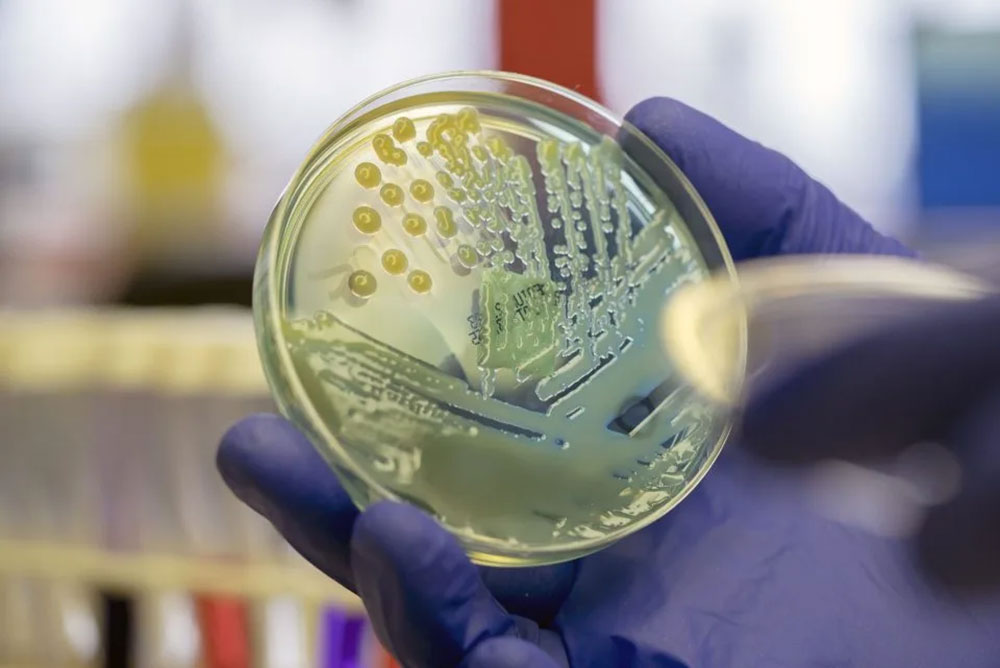As one public health crisis recedes, another emerges in the spotlight. Less than a year after the conclusion of the federal COVID-19 Public Health Emergency, a coalition of international political, public health, and biomedical leaders is alerting to a new threat to human life that could also induce economic setbacks.
Antimicrobial resistance (AMR) is when certain pathogens withstand the effects of drugs designed to eliminate them. A recent report from the Global Leaders Group (GLG) on Antimicrobial Resistance warns that by 2035, AMR could reduce global life expectancy by an average of 1.8 years, with some low- and middle-income countries experiencing declines of up to 2.5 years.
The report also predicts a potentially catastrophic impact on the global economy, estimating annual losses of $855 billion until 2035. This includes approximately $412 billion in healthcare expenses for treating drug-resistant bacterial infections, along with $443 billion in productivity losses and reduced workforce participation due to higher rates of illness and death.
Published this month, the GLG on AMR report urges United Nations member states to take decisive action to address this global health threat. This includes securing funding to address the declining research and development of new antibiotics. Following the first UN high-level meeting on AMR eight years ago, the UN General Assembly will reconvene in September for a second meeting on the issue.
Prime Minister Mia Amor Mottley of Barbados, chair of the GLG on AMR, emphasized the urgency of the situation in a statement, stating, “We have the means to tackle the AMR crisis, and these findings underscore a grim future if we fail to take bold action now.” She added that the Global Leaders Group is proposing recommendations and targets to prompt a robust global response to AMR and potentially save millions of lives.
Why is AMR a global public health threat?
Various microorganisms such as fungi, parasites, viruses, and bacteria can cause infections in plants, animals, and humans. Over time, they can evolve to resist antimicrobial medicines like antifungals, antiparasitics, antivirals, and antibiotics. The World Health Organization (WHO) defines “superbugs” as microorganisms that develop antimicrobial resistance (AMR).
According to Jamie Alan, PharmD, PhD, an associate professor at Michigan State University, overprescribing antibiotics exacerbates this issue. Alan explains that many infections, like ear infections, can be either viral or bacterial. However, patients often expect antibiotics even if they aren’t necessary. In cases where antibiotics are warranted, the infection may already be resolving by the time medical attention is sought. Using antibiotics in viral infections not only fails to treat the illness but also facilitates microbial mutation, leading to the spread of resistant strains.
The consequences of AMR are severe, with a Lancet analysis attributing 4.95 million deaths to it in 2019 alone, directly causing 1.27 million fatalities. The WHO has classified AMR as a significant global public health and development threat, with the GLG on AMR proposing a 10% reduction in global deaths by 2030.
Dr. William Schaffner, a professor at Vanderbilt University Medical Center, emphasizes the global nature of the problem, noting that diseases can swiftly spread across borders. Whether through international travel or local transmission, combating AMR requires a concerted effort on both local and global scales.
Drugmakers need incentives to develop new antimicrobials
According to Schaffner, the initial step in tackling AMR is practicing antibiotic stewardship, which involves reducing antibiotic prescriptions. He explains, “The less we use, the more effective our current antibiotics will remain against bacteria.”
Alan emphasizes that overprescribing extends to pediatric patients. While she acknowledges the urge to seek medication for sick children, she stresses that antibiotics aren’t always suitable for every ailment.
The pharmaceutical industry also plays a crucial role in addressing this issue. Schaffner notes that developing new antibiotics is increasingly complex and costly. Moreover, unlike medications for chronic conditions, antibiotics are typically used intermittently throughout one’s life, which may deter pharmaceutical companies due to uncertain returns on investment.
Schaffner further explains the counterintuitive nature of antibiotic development, where new antibiotics are often reserved as a last resort. Despite bipartisan support, the proposed PASTEUR Act of 2023, aimed at combating AMR with a $6 billion appropriation and subscription contracts with drug developers, is currently stalled in the Senate.
The GLG on AMR aims to reduce antimicrobial use in agriculture by 30–50% by 2030 and proposes global interventions costing approximately $46 billion annually. However, it estimates that every dollar spent by 2050 could yield returns of up to $13.
Schaffner underscores the collective responsibility in managing AMR with the antibiotics currently available. He emphasizes the need for collaboration among the general public, medical professionals, veterinarians, and the agriculture industry to ensure the continued effectiveness of antibiotics in treating both human and animal illnesses.



